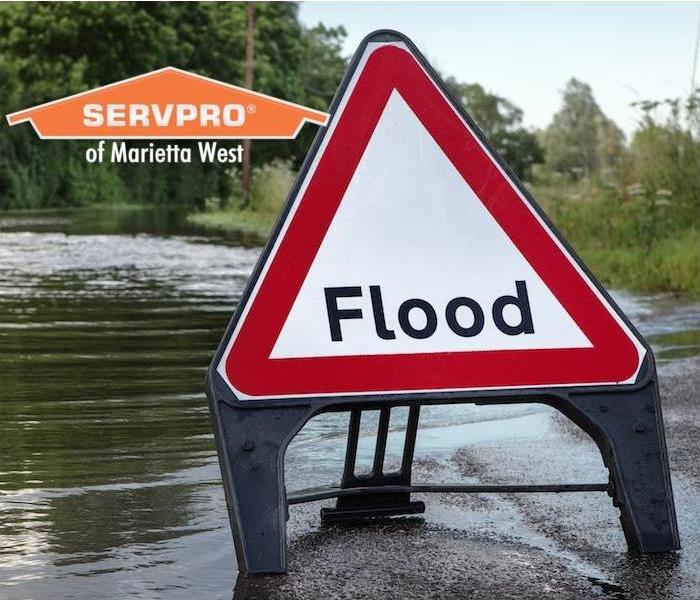Flooding and the Elements That Cause It | SERVPRO of Marietta West
4/11/2022 (Permalink)
 Regardless of the cause of the flooding, SERVPRO of Marietta West has the team to help you recover from any disastrous event.
Regardless of the cause of the flooding, SERVPRO of Marietta West has the team to help you recover from any disastrous event.
Flooding, which is actually the most common natural disaster in the world, affects each and every state in the nation and leads to more casualties than hurricanes, tornadoes or lightning. The effects are often deadly and certainly destructive, as a flood can affect anywhere from a single home to entire communities.
There are just a few types of flooding and causes behind them. Most commonly, there are three types of flooding and four causes.
3 Types of Natural Flooding
Flash floods are common, and they happen when heavy rain passes or sits over an area and overwhelms the ability of the ground to contain the moisture. Excess water can take items, big or small, with it.
River floods are exactly what they sound like. When there’s too much water for a river’s banks to hold, the water spills over the sides and causes destruction.
Coastal floods happen in areas next to large bodies of water, when storm surges or cyclonic activity causes ocean or gulf levels to rise to flood levels.
The 4 Most Common Causes of Natural Flooding
Heavy rainfall. Storms with excessive rainfall, or storms that sit and rest over an area for an extended period can cause flash floods or river flooding. Urban areas are more at risk for rain floods, because the higher percentage of concrete and asphalt means there’s a lack of soil to soak up all that water.
Oceanic activity. Storm surges, hurricanes and rising tides can cause water levels to rise in waves, which can invade coastal communities and wreak havoc. In 2021, Hurricane Ida took its toll on Marietta, with multiple inches of rain that resulted in significant flooding. Many homes and buildings were ruined by the flooding. In fact, Cobb Emergency Management received over 250 reports of building damage. The U.S. Small Business Administration issued a Disaster Declaration for Cobb County to provide assistance to those affected by the flooding.
Dams and levees failing. The most notable example of this in recent history would be the disastrous levee breaks during 2005’s Hurricane Katrina. Levees and dams fail when cracks occur or excess pressure overtakes the dam’s ability to contain the surge of water behind it.
Snowmelts and ice dams. In areas of the country where heavy snow and prolonged freezing temperatures are common, snow and ice can build up over a winter’s time, and when they start to melt, they cause rivers of water to flow through area communities. Ice dams or ice jams happen when rivers become blocked by built-up ice being carried downstream, causing the banks to overflow.
Regardless of the cause of the flooding, SERVPRO of Marietta West has the tools and teams to help your home or business recover from its disastrous effects. Contact us anytime when flooding or water damage makes a mess in your life.
Call us at (770) 428-5467 or learn more about our services at www.SERVPRO.com






 24/7 Emergency Service
24/7 Emergency Service